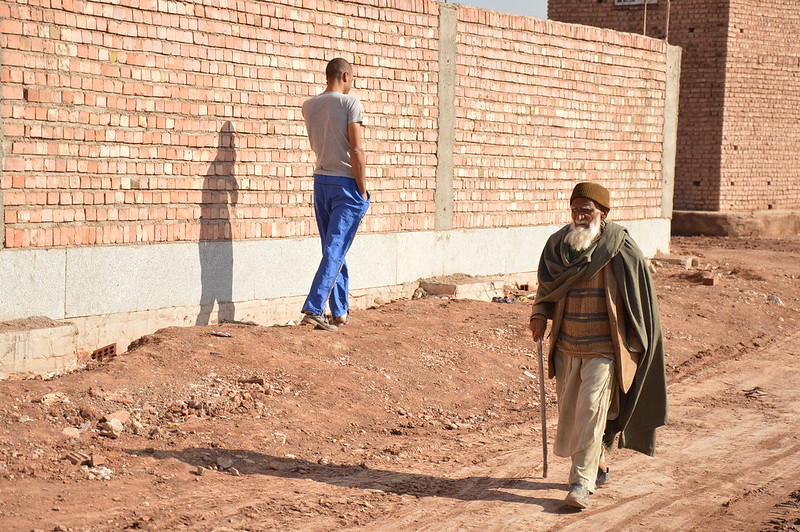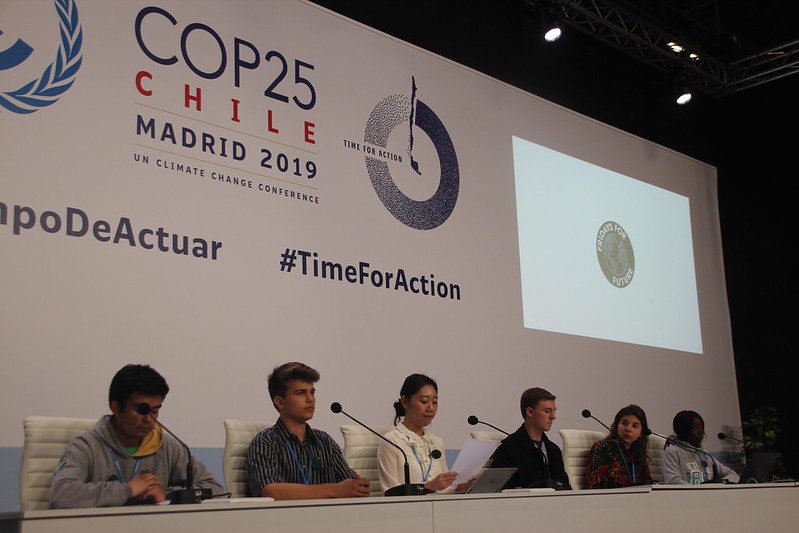Participants at the COP25 in Madrid need to demonstrate a strong commitment to ensuring that the world’s cities become part of the solution, instead of the problem, for climate change, say IDRC’s Dominique Charron and Barbara Shenstone.
Cities are major contributors to climate change, but they also have the power to change the world. They are essential to addressing the global climate change crisis, and some, informed by science, are already doing so. More cities must follow those who are taking action.
The global desire and capacity for change is strong, as demonstrated by the millions of people worldwide taking to the streets in protest. This call for action will be at the forefront of the 25th Conference of the Parties (COP25) to the United Nations Framework Convention on Climate Change taking place from 2 to 13 December in Madrid. This annual meeting brings the international community together to share solutions, galvanize change, and to track progress towards the Paris Agreement climate commitments.
We must seize upon these opportunities for collaboration as the scale and frequency of climate-change-related crises continue to grow.
A changing Middle East climate

The devastation caused by extreme weather events is a catalyst for the growing demand for climate action worldwide. The Middle East and North Africa region is particularly vulnerable to climate change, with almost continuous regional drought since 1998, floods in Saudi Arabia, deadly heat waves in Kuwait, and rising sea levels threatening archaeological sites in Egypt’s coastal city of Alexandria.
People across the Middle East and North Africa will face relatively higher social, economic and ecological costs from climate change compared to the rest of the world. Low-lying coastal areas in Tunisia, Qatar, Libya, the United Arab Emirates, Kuwait, and particularly Egypt are at higher risk, according to the UN’s latest Intergovernmental Panel on Climate Change (IPCC) assessment.
The time for action is now.
Why the focus on cities, and why now?
Because of the accelerating pace of urbanization.
By 2050, two thirds of the world’s population will live in cities, which are already home to more than half the world’s population and the majority of infrastructure, assets and economic activity. They consume 78% of global energy and account for more than 60% of greenhouse gas emissions. Yet, they cover only 2% of the world’s surface.
By 2050, two thirds of the world’s population will live in cities, which are already home to more than half the world’s population and the majority of infrastructure, assets and economic activity.
Strong evidence is available to inform local and national governments so that they design resilient cities and mitigate their impact. For vulnerable people living in and around the cities, in particular for women and girls, this may prove a matter of life and death.
Cities must invest in research to understand their unique challenges, how their citizens are affected, and what solutions are best suited to a local context.

Science-based solutions for resilient cities
Proven solutions, backed by rigorous science, exist for many of the climate shocks and stresses facing cities. Throughout the Global South, urban planners and regional leaders have been working for years to build their capacity to anticipate, adapt and persevere.
Many solutions for urban climate adaptation are low cost, low tech, and nature-based. In the small industrial city of Yumbo, in Colombia, green infrastructure has been used to mitigate flooding. Paved roads are replaced with porous green roads that allow water percolation and reduce the urban heat-island effect. Results have shown that these roads significantly reduce localized flood hazards.
In addition to these efforts, city-level, secure financing is needed to address climate change. The resilience and adaptability of cities in the face of climate change will influence whether global targets on climate change and sustainable development are met.
When a city floods, or faces other extreme weather events, the necessary focus on a crisis response can cloud the bigger picture, which reveals the common ground between the challenges, and solutions, that exist worldwide.
We must tackle the multiple dimensions contributing to urban poverty, vulnerability and inequality if we are to meet the global commitment to ‘leave no-one behind’. This means amplifying the commitment to our global climate that will be on display at COP25 in Madrid so it infuses political, policy, research and investment agendas worldwide with the imperative need for action.
Source: Nature Asia
This post is available in: English Español



